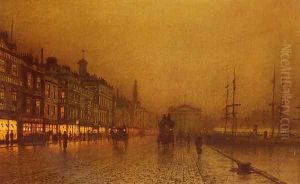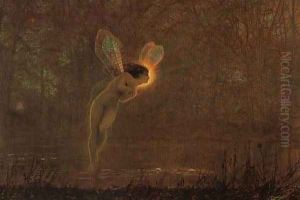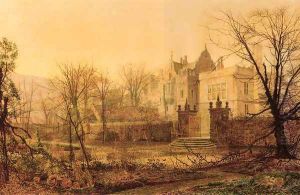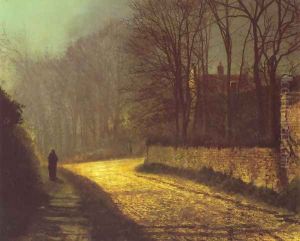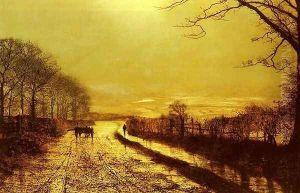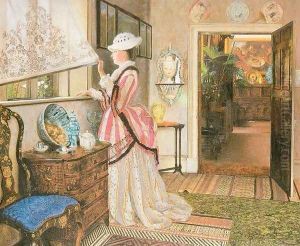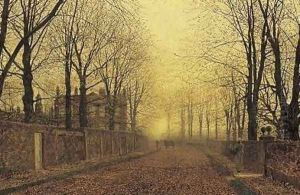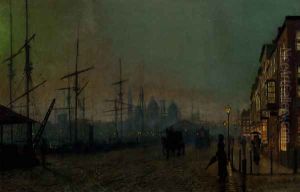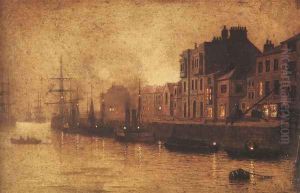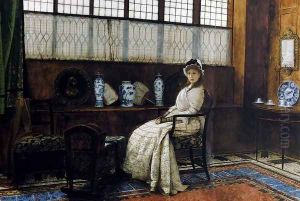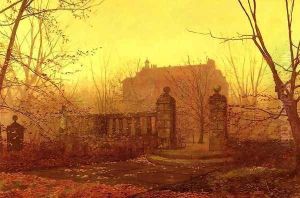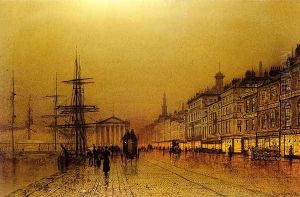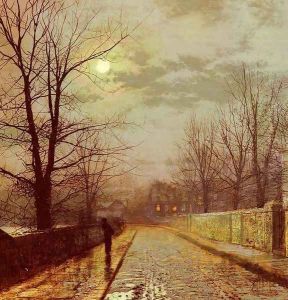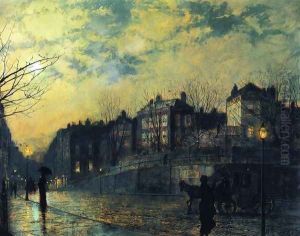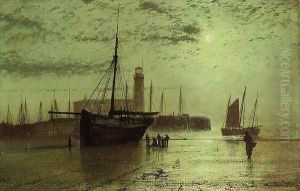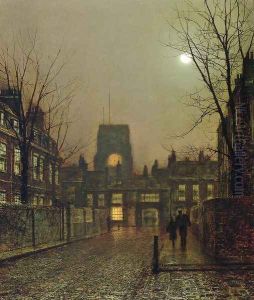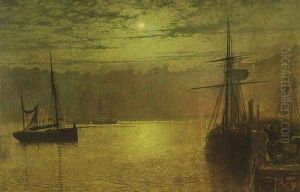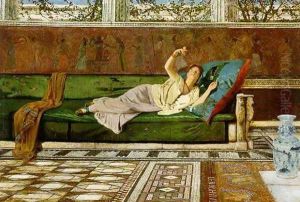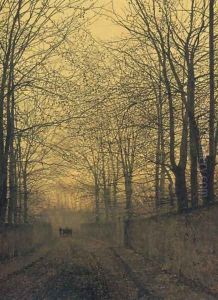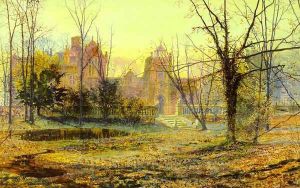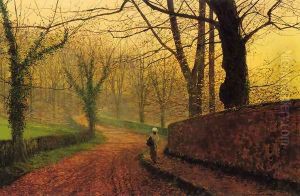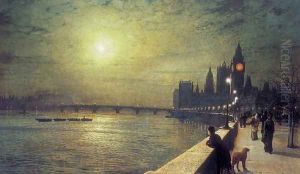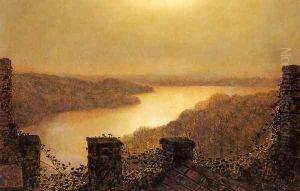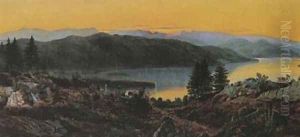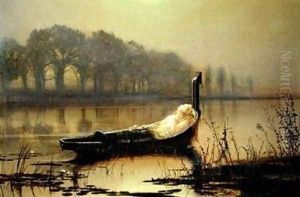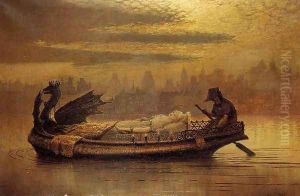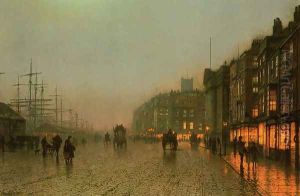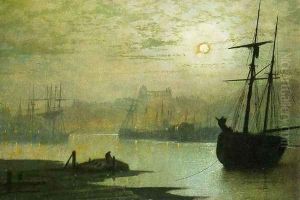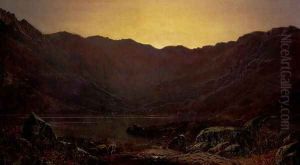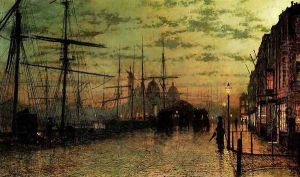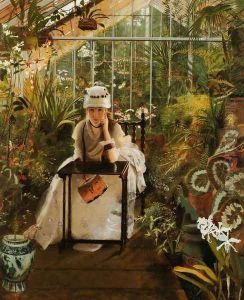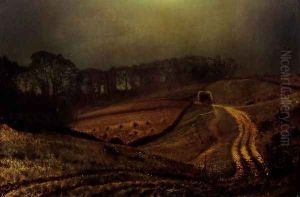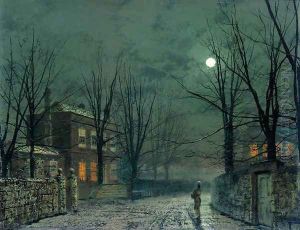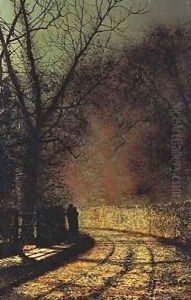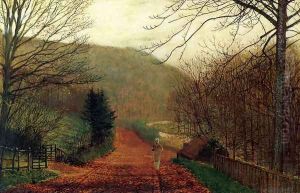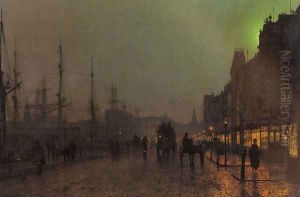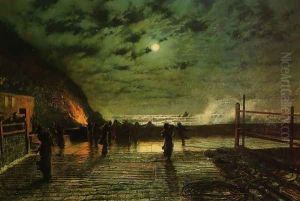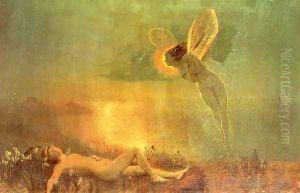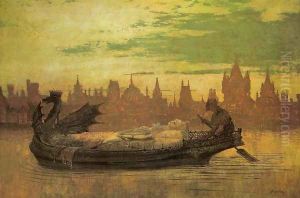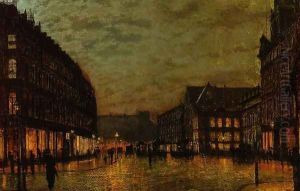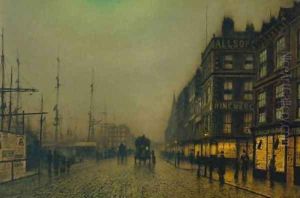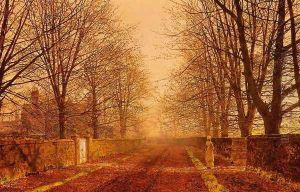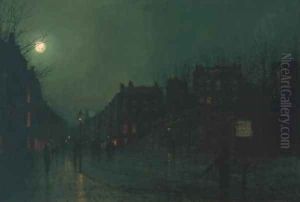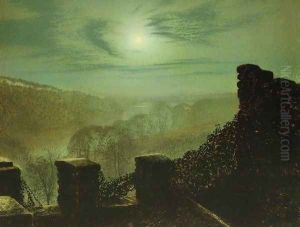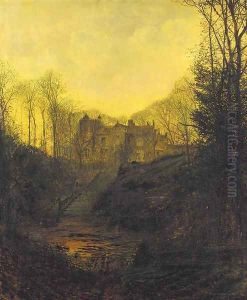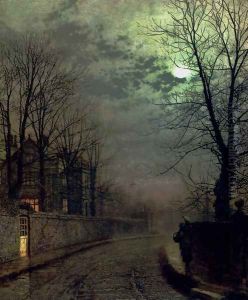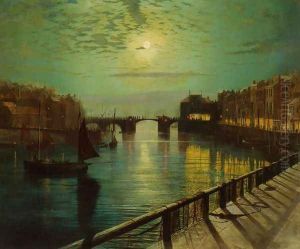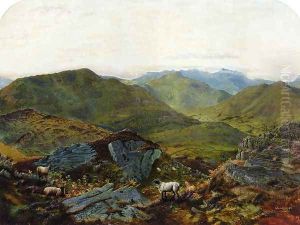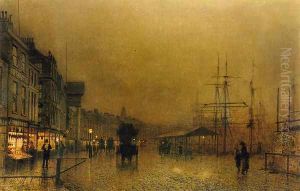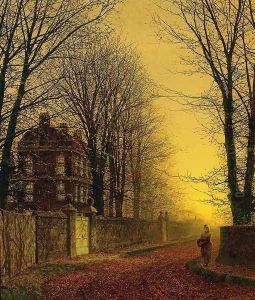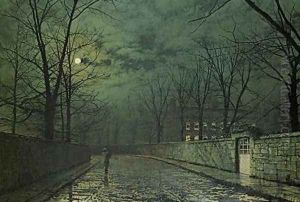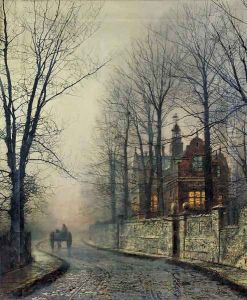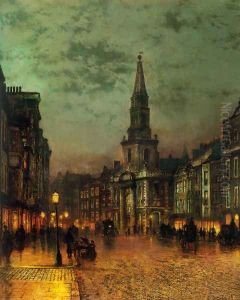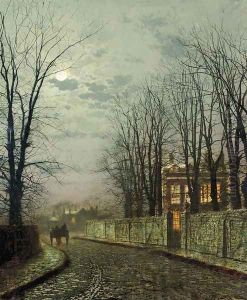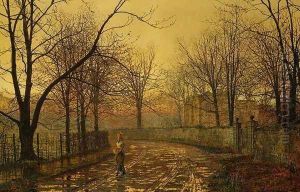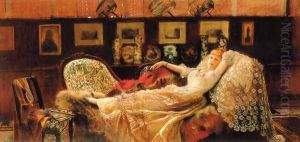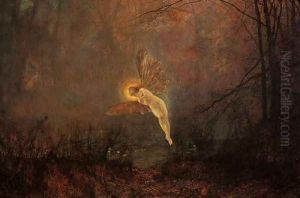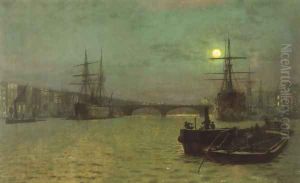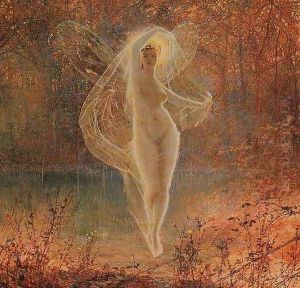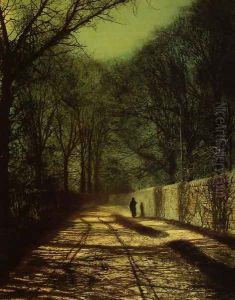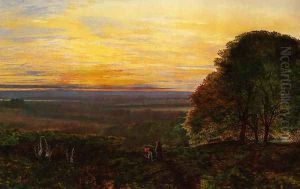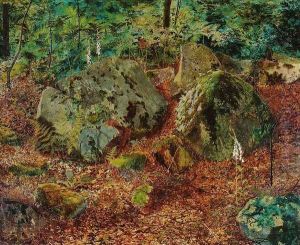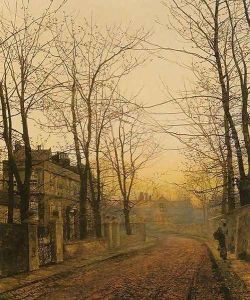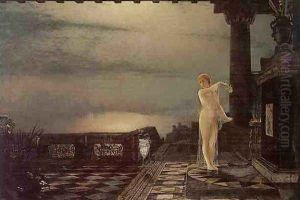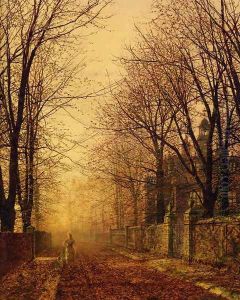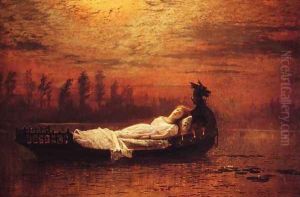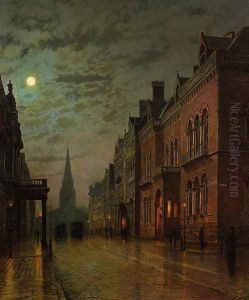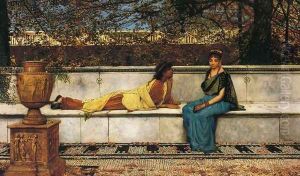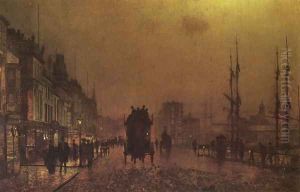John Atkinson Grimshaw Paintings
John Atkinson Grimshaw was a renowned British painter known for his evocative nocturnal scenes and landscapes. Born on September 6, 1836, in Leeds, England, Grimshaw was a self-taught artist who began his career as a clerk for the Great Northern Railway. It was not until his early thirties that he left his job to pursue painting full-time, a bold move that was not immediately supported by his family.
Grimshaw's early works were influenced by the Pre-Raphaelites, and he painted primarily in oils. His attention to detail and love for realism quickly distinguished his work. His paintings often captured the essence of the Victorian era, with its fascination with the industrial cities and the changing British landscape. Grimshaw's unique ability to depict the effects of damp on the surfaces of buildings and roads, and the play of gaslight on wet pavements, set his work apart from his contemporaries.
By the 1870s, Grimshaw had established himself as a talented painter of urban night-scenes and moonlit landscapes. He was particularly adept at creating atmospheric effects and his paintings often featured a combination of natural and artificial light sources. His works such as 'Nightfall Down the Thames' and 'Liverpool Quay by Moonlight' showcase his skill in capturing the mood and atmosphere of the industrial age.
Grimshaw's popularity grew, and he was able to command high prices for his paintings, which allowed him to live comfortably and maintain a studio in Leeds and a holiday home in Scarborough. He was also known to have used photography to aid his compositions, a practice that was becoming more common among artists of his time.
Despite his success, Grimshaw's art did not receive official recognition from the Royal Academy of Arts. Nevertheless, he was able to exhibit his work at commercial galleries, and his paintings were sought after by middle-class clients who appreciated his modern subject matter and distinctive style.
John Atkinson Grimshaw's legacy is that of a painter who captured the spirit of an age; his work remains a testament to the beauty and complexity of the Victorian urban landscape. He died on October 13, 1893, leaving behind a body of work that continues to be celebrated for its beauty and technical proficiency.
